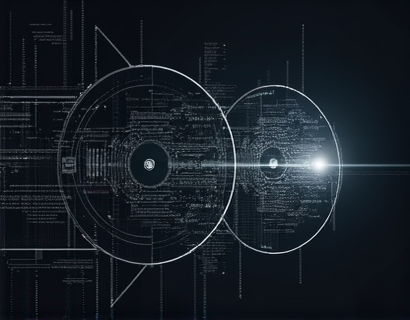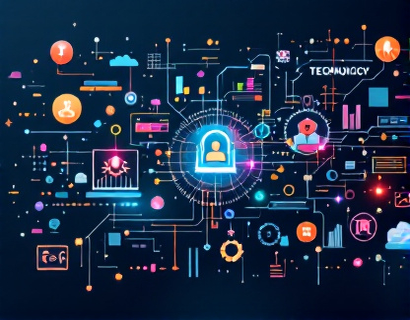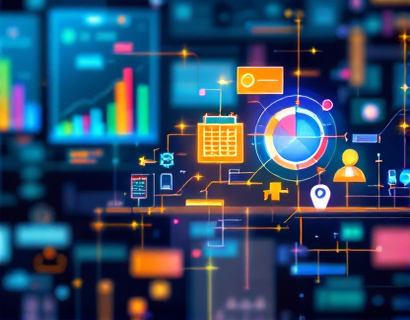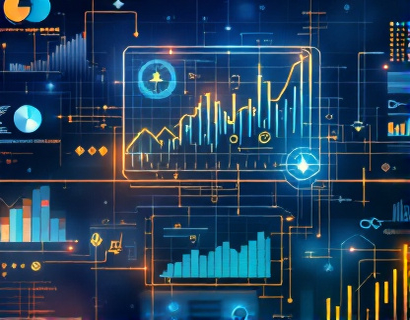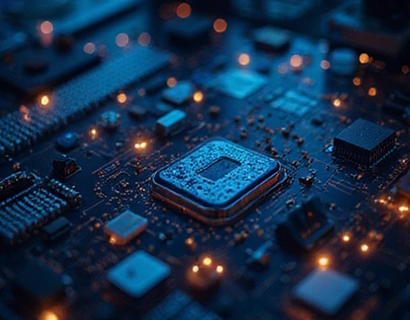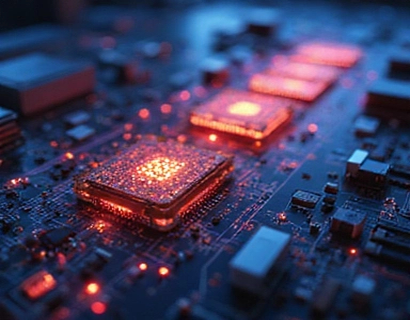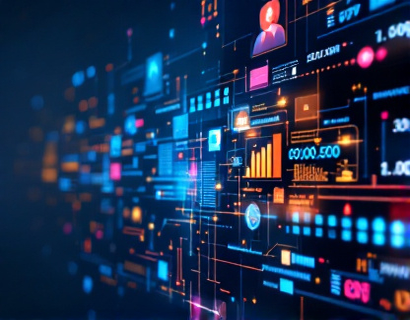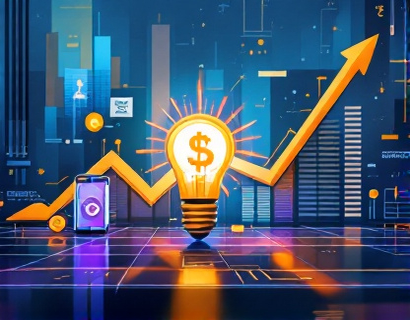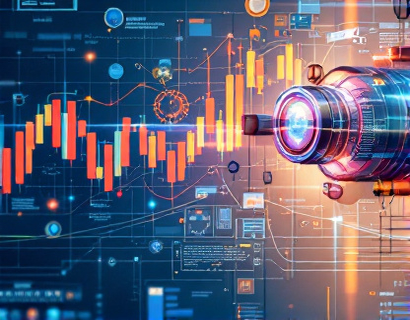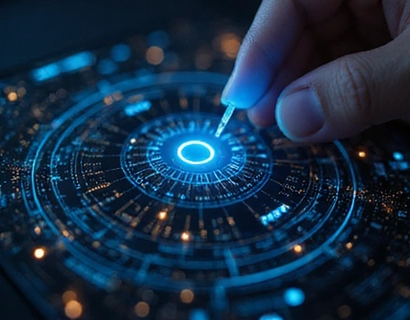Decentralized Innovation: Unleashing the Future with Crypto and AI-Powered Digital Solutions
The intersection of cryptocurrency and artificial intelligence (AI) is giving rise to a new era of decentralized innovation. This convergence is not just a technological curiosity but a transformative force that is reshaping the digital landscape. As we delve into this topic, it's essential to understand how these technologies are merging to create decentralized applications (dApps) and AI-driven services that are enhancing user experiences and driving engagement. This article aims to provide a comprehensive exploration for tech enthusiasts, early adopters, and anyone interested in the future of digital innovation.
The foundation of this new era lies in blockchain technology, the backbone of cryptocurrency. Blockchain's inherent characteristics—decentralization, transparency, and security—provide an ideal environment for innovative applications. When combined with AI, which excels in data processing, pattern recognition, and predictive analytics, the potential for transformative solutions becomes immense. This synergy is giving birth to a new class of applications that are not only more efficient but also more user-centric and secure.
Decentralized Applications: The New Frontier
Decentralized applications, or dApps, are applications that run on a blockchain or a decentralized network rather than on a central server. This decentralized nature ensures that no single entity has control over the application, making it more resilient to censorship and manipulation. dApps leverage smart contracts, self-executing contracts with the terms directly written into code, to automate and enforce agreements without intermediaries.
One of the most significant advantages of dApps is their ability to operate without central points of failure. This reduces the risk of downtime and data breaches, which are common concerns with traditional centralized applications. For instance, a decentralized social media platform can operate without a central authority, allowing users to maintain control over their data and interactions. This not only enhances privacy but also fosters a more democratic and inclusive digital environment.
Moreover, dApps can leverage AI to enhance their functionalities. For example, an AI-powered dApp in the finance sector can analyze market trends, predict price movements, and provide personalized investment advice to users. This combination of decentralization and AI not only improves the reliability and security of the application but also offers users more intelligent and tailored services.
AI-Driven Services: Enhancing User Experiences
AI-driven services are revolutionizing the way we interact with digital platforms. These services use machine learning algorithms to understand user behavior, preferences, and needs, enabling more personalized and intuitive experiences. In the context of decentralized systems, AI can be used to optimize resource allocation, improve security measures, and enhance user engagement.
Consider a decentralized content creation platform where AI algorithms curate and recommend content based on user interests and engagement patterns. This not only improves the user experience by providing relevant content but also incentivizes creators by ensuring their work reaches the right audience. The decentralized nature of the platform ensures that content creators retain control over their work and receive fair compensation, fostering a more sustainable ecosystem.
Another example is in the realm of healthcare, where AI-powered dApps can analyze medical data from various sources to provide diagnostic insights and treatment recommendations. These applications can operate independently, ensuring patient data remains secure and private while leveraging the collective power of decentralized networks to enhance accuracy and reliability.
Enhancing Security and Privacy
Security and privacy are paramount in the digital age, and the combination of blockchain and AI offers robust solutions. Blockchain's immutable ledger ensures that once data is recorded, it cannot be altered or deleted, providing a high level of data integrity. AI can further enhance security by detecting and mitigating threats in real-time, identifying anomalies and potential vulnerabilities that human monitors might miss.
Privacy is another area where this synergy shines. Decentralized systems can use AI to implement advanced encryption techniques and zero-knowledge proofs, allowing users to verify transactions or data without revealing sensitive information. This ensures that users maintain control over their data while benefiting from the collective strengths of decentralized networks.
User Engagement and Incentivation
Decentralized platforms can design more engaging and incentivized experiences for users. By integrating AI-driven analytics, these platforms can understand user behavior and preferences, enabling the creation of tailored incentives and rewards. For instance, a decentralized gaming platform can use AI to analyze player behavior and offer customized challenges and rewards, keeping users engaged and motivated.
Tokenization, a key feature of blockchain technology, plays a crucial role in incentivizing user participation. Tokens can be used to reward users for contributing value to the network, such as creating content, verifying transactions, or participating in governance. AI can optimize the distribution and management of these tokens, ensuring a fair and efficient system that aligns user interests with the health and growth of the platform.
Challenges and Considerations
While the potential of decentralized innovation is vast, there are challenges that need to be addressed. Scalability remains a significant issue for blockchain networks, as they struggle to handle high volumes of transactions efficiently. However, ongoing developments in layer 2 solutions and more efficient consensus mechanisms are addressing these concerns.
Another challenge is the regulatory landscape. As decentralized applications and AI-driven services gain traction, governments and regulatory bodies are beginning to take notice. Navigating this landscape requires a balanced approach that fosters innovation while ensuring compliance with existing laws and standards.
Education and adoption are also critical. Many users are still unfamiliar with blockchain and AI technologies, which can hinder widespread adoption. Initiatives to educate and demystify these technologies are essential for driving broader acceptance and utilization.
The Future Landscape
The future of decentralized innovation is bright, with endless possibilities at the intersection of cryptocurrency and AI. As technology continues to evolve, we can expect to see more sophisticated and user-friendly applications that seamlessly integrate these technologies. The potential for decentralized finance (DeFi), decentralized autonomous organizations (DAOs), and AI-powered decentralized marketplaces is immense.
Moreover, the convergence of IoT (Internet of Things) and blockchain, powered by AI, can lead to smarter and more autonomous systems. Imagine a world where devices communicate and operate independently, making decisions based on real-time data and AI-driven insights, all within a secure and decentralized framework.
In conclusion, the merging of cryptocurrency and AI is not just a technological trend but a fundamental shift in how we build and interact with digital systems. By embracing decentralized innovation, we can create more secure, transparent, and user-centric digital experiences. As we continue to explore and harness this potential, the future of digital innovation looks more promising than ever.



